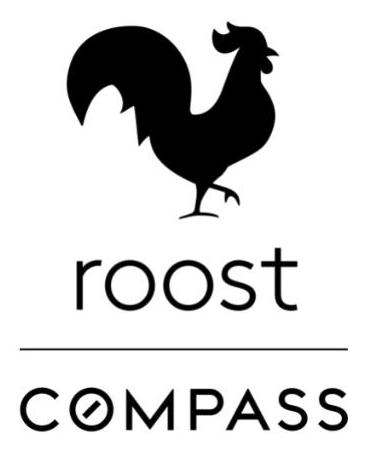Passive Investing Through Syndications
Passive Investing Through Syndications
The Roost Team and Jordan Whitewater have been investing in Real Estate for many years now and collectively have owned and helped develop over 1,000 doors.
Jordan recently put together a very unique out of state deal, where he and his team went out and put together a semi-complex deal, by raising money through a Syndicate of investors.
Below is a recap of how the deal looked and why they chose to go out and Syndicate the deal.
What is Syndication?
Passively investing in real estate through syndication is a way for multiple investors to pool their money together to jointly purchase a large asset. Why? Because this allows them to invest in much bigger properties than any individual investor could acquire on their own and it’s completely passive. Real estate syndications can help investors achieve the benefits of owning an investment property (cash flow, appreciation, tax breaks) without the work or stress of being a landlord themselves.
Over the next 4-6 years, Jordan and the other investors involved will be receiving a cash distribution in their bank accounts every three months without having to worry about doing anything on their end. This is the beauty of investing through a Syndicate.
Additionally, at the end of their deal they are projecting to receive a lump sum payment that will almost double their initial investment.
Continue reading to gain more insight on Jordan's newest deal that his investment company recently closed on and the highlights of the advantages for the investors involved.
Purchase Price $4,000,000
Funds Raised $1,070,000
Hold Period 4-6 years
Number of Units 45
Cost per Unit $89,000
Minimum Investment $50,000
Average Investment $80,000
Current Value $4,300,000
Investor Return 7% annual cash flow, 15%-17% average annual return, and 1.91x return on investment.
What do these numbers mean? Particularly the returns.
Every year, the investors can anticipate 7% of their original investment in cash flow paid out in quarterly deposits.
Example: With an investment of $100,000, you could anticipate $1,750 per quarter.
When you combine the annual cash flow with the years of appreciation at the end of the project investors can expect a net return of 15%-17% annually.
Once the property is sold, investors can expect all of their initial investment plus an additional 50%-60%. So, on a $100,000 investment, our investors will get a check for $150,000-$160,000 on top of the 7% they’ve been receiving for the number of holding years.
Let’s go over some other factors that made this deal great.
For starters, this deal never hit the open market. It was brought to them by the listing brokers due to past purchases Jordan's partners had made in the area. The brokers knew they liked the area and could execute on the deal. Upon running the numbers, Jordan and his team decided it was well worth looking into in further detail.
What they really liked about this deal was that it was simple, safe, and made for a smooth transaction. The group that had purchased the building before them had the strategy to bring a lot of capital to the property and fix a number of major issues that needed to be tended to. They replaced the roof, water heaters, siding, did some landscaping, and re-paved the parking lot. In return they were able to raise rents that gave them a $4M+ evaluation.
For Jordan and his team, the strategy was simple. Given their experience in the area they know the rents are well under market. At the time they signed the contract, the average unit was renting for $825/month. By the time they closed on the property the previous owners had already increased rent to around $860/month (most leases renewed while they were under contract). This increase in rents not only will give Jordan a higher cash flow than projected but the property also increased in value to around $4.3M!
In commercial real estate, the value of the property is rarely found by comparing it to similar properties like you would on a residential transaction. Instead, banks and investors use a number of standard equations to determine value. In short, anytime the expenses go down or the income goes up, the value increases with a variable called the cap rate (Net Operating Income) / Cap rate = Value.
Please keep in mind there are other factors but for a quick example this will suffice.
Please see below:
With expenses staying the same and income (rent) going up the net operating income (NOI) increased $35 per unit/month or close to $19,000.
$35 (dollars) x 45 (units) x 12 (months) = $18,900 increase in our NOI.
Plugged in to our cap rate equation and assuming a 7% cap rate, the equation looks like this:
$18,900/.07= $270,000
Given the increase in rents which leads to an increased NOI, $270,000 represents the increase in property value.
Jordan and the investors' goal is to provide great service and management to all of their tenants and raise the rents to market rate which is about $1,000/month over the next three years. If they can hit their numbers, they will refinance the loan and cash out a large chunk of their initial investment.
At the end of the day, investing through a syndication is a great way to invest in real estate with very little risk and even less work. These days it sounds impressive to say you own an apartment building but no one wants to be responsible for taking 2am phone calls, fixing a broken window in the cold or settling tenants disputes and dealing with evictions. Syndications give you the best of both worlds.
If you’d like to learn more about this project or future deals please reach out to Jordan. He is more than happy to talk to you in greater detail about how these deals work and how you can get involved too!
The Roost Team also has several other smaller buildings coming to the market in Spring of 2022.
Please reach out Directly to Jordan or BJ LaVelle for more info.




